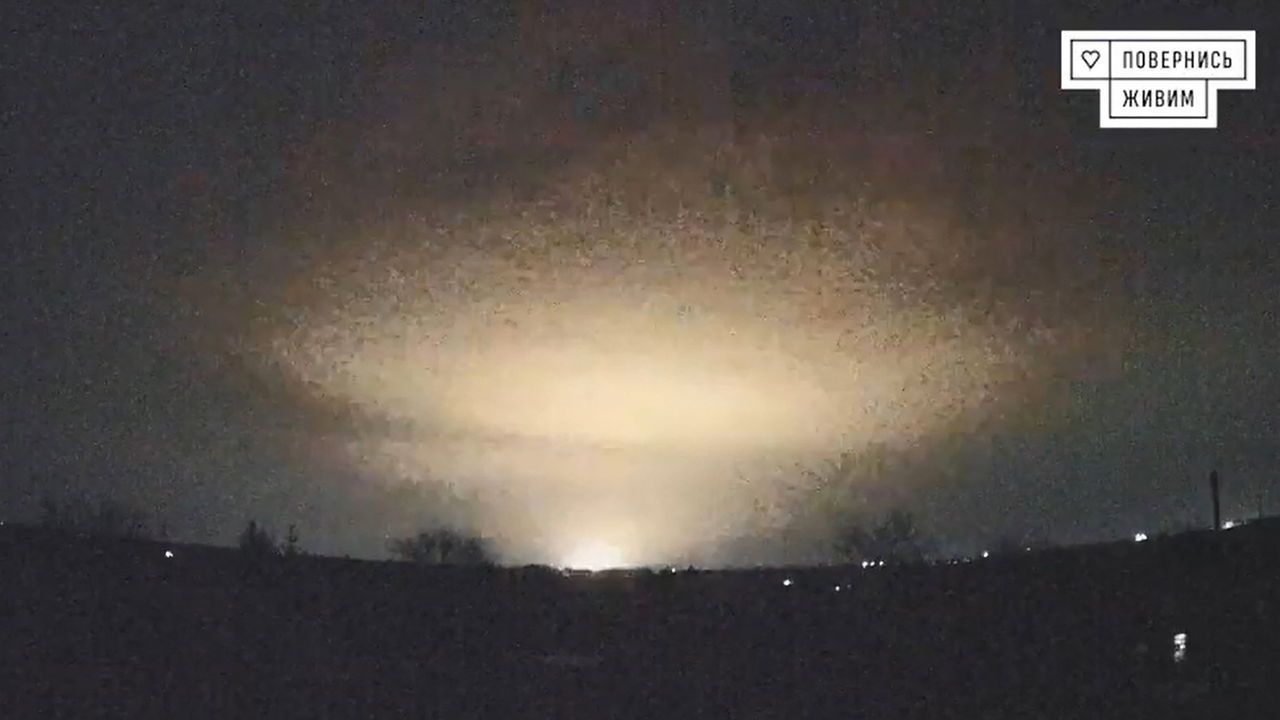- by
- 01 30, 2025
-

-
-
Loading

Loading

AT DAWN ONICBMRSATACMS RSICBMNATONATONATO November 21st the Russian missiles slammed into the central Ukrainian city of Dnipro. Some were Kh-101 , carried by hulking Russian bombers. Others were Kinzhal , fired from Russian jets. And at least one was new and nameless. Videos showed six warheads descending, almost vertically, onto the city, each releasing a slug of smaller projectiles. What was this mysterious weapon?Ukraine’s air force suggested it was an intercontinental ballistic missile (). Those are almost exclusively associated with nuclear weapons and have never been fired in anger. Other observers pointed to the -26, a missile straddling the boundary between intermediate range (roughly, between 3,000,km and 5,500km) and intercontinental (more than 5,500km). Western officials hinted that the missile was an experimental prototype.Later that day Vladimir Putin, Russia’s president, speaking from his wood-panelled office in the Kremlin, declared that it was in fact a new intermediate-range hypersonic missile known as Oreshnik. The missile, which struck a Ukrainian military-production facility, was fired in response to and British Storm Shadow missiles on Russian soil days earlier, claimed Mr Putin. He added that it travelled at more than ten times the speed of sound and could not be intercepted.Mr Putin’s claims ought to be taken with a pinch of salt. He has made lurid boasts of hypersonic missiles in the past, sometimes exaggerating their capabilities. Oreshnik itself was “based on” the -26, a missile first tested 13 years ago, said Sabrina Singh, the Pentagon’s deputy press secretary. It was not any sort of revolutionary new weapon. Nevertheless, the strike looks very much like part of a larger Russian effort to dissuade Western countries from deepening their involvement in Ukraine. An important audience was bound to have been the incoming Trump administration, still fine-tuning its approach to the war.On November 19th Russia published a revised nuclear doctrine that spelt out in more detail—and in some cases expanded—the circumstances under which nuclear weapons could be used. The new doctrine specifies that large conventional attacks on Russia, or allies like Belarus, could meet with a nuclear response. It also says that attacks by non-nuclear states (like Ukraine) backed by nuclear states (like America and Britain) could be treated as a joint attack. The strike on November 21st was almost certainly intended to amplify that nuclear signalling.Russia has fired huge numbers of ballistic missiles at Ukraine in the past, many of them nuclear-capable, such as the Kinzhal. But Oreshnik is different. It was originally classified by both America and Russia as an . Even if it is one notch down in its range, such land-based intermediate-range ballistic missiles are complex and expensive weapons that are still almost always associated with nuclear payloads. Only Iran has ever fired conventional ones in anger. Moreover, those, like Oreshnik, that carry multiple warheads are exclusively associated with nukes.The strike on November 21st appeared to involve inert or dummy warheads, which have significant kinetic energy because of their speed but no explosives. That is one indication that the missile was designed for nuclear rather than conventional use. It is also noteworthy that Russia gave America 30 minutes’ notice of the strike using communication channels designed for nuclear-risk reduction—though America was clearly aware of some sort of imminent threat the day before, having shut its embassy.Simply put, Mr Putin wants Ukraine and its Western allies to believe that he might escalate either “vertically” within Ukraine or “horizontally”, by directly attacking states. “We consider ourselves entitled to use our weapons,” he noted on November 21st, as he described Oreshnik, “against the military facilities of those countries that allow their weapons to be used against our facilities.” On the same day, Ukrainian lawmakers were warned that the country’s parliament building in Kyiv was at risk of Russian missile attack.These threats ought to be taken seriously, but not always literally. Ukraine has repeatedly used Western missiles against Crimea and other Russian-occupied Ukrainian territories, which Mr Putin deems to be Russian soil, without triggering dramatic escalation. In late 2022 Mr Putin did consider using nuclear weapons, according to Western officials; but his army was then retreating in chaotic fashion. Today, by contrast, it is on the front foot. Moreover, American and European intelligence officials say that they believe Mr Putin remains determined to avoid an open military clash with . A strike on soil would almost certainly trigger Article Five, the alliance’s mutual-defence clause—one reason why Mr Putin has ramped up sabotage as an alternative.More broadly, the use of Oreshnik and its ilk is part of a new era of missile warfare. Russia and Ukraine have both used vast numbers of cruise and ballistic missiles against one another. In October Iran conducted the largest-ever barrage of ballistic missiles against Israel, about 200, its second large salvo of the year. Israel has used air-launched ballistic missiles—relatively rare and exotic weapons—against Iran. On November 17th India said it had tested its own 1,500km-range hypersonic missile.America plans on deploying in Germany in 2026. Europeans are co-operating to build their own conventional “deep-strike” systems. And countries are also investing huge sums in anti-missile defences to cope with all this—though there are few viable and cost-effective means to defend a particular area against very long-range missiles, which enter at a speed and angle that makes them hard to intercept. Oreshnik is the first-ever intermediate-range missile with multiple warheads to be fired in combat. It may not be the last.